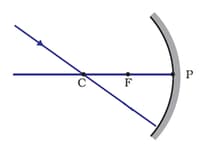Focal length of diverging mirror is . An object is kept at a distance of from the mirror. Find the image distance and it's nature.
Important Questions on Light – Reflection and Refraction
For the diagram shown, according to the new Cartesian sign convention the magnification of the image formed will have the following specifications.
The radius of curvature of a converging mirror is . At what distance from the mirror should an object be placed so as to obtain a virtual image?
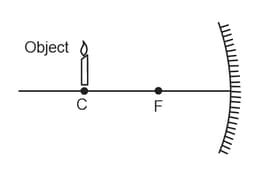
Which of the following statements is not true in reference to the diagram shown above?
What should he do to burn the paper?
A student holding a mirror in his hand, directed the reflecting surface of the mirror towards the Sun. He then directed the reflected light on to a sheet of paper held close to the mirror.
Which type of mirror does he have?
In which of the following is a concave mirror is used?
An object of height is kept at a distance of from the pole of a diverging mirror. If the focal length of the mirror is , the height of the image formed is ____.
A student holding a mirror in his hand, directed the reflecting surface of the mirror towards the Sun. He then directed the reflected light on to a sheet of paper held close to the mirror.
Will he be able to determine the approximate value of focal length of this mirror from this activity ? Give reason and draw ray diagram to justify your answer in this case.
Draw a ray diagram to show the
(i) position
(ii) nature of image formed
when an object is placed between F and C of a concave mirror.
Consider the following diagram in which M is a mirror and P is an object and Q is its magnified image formed by the mirror. State the type of mirror M and the one characteristic property of the image Q.
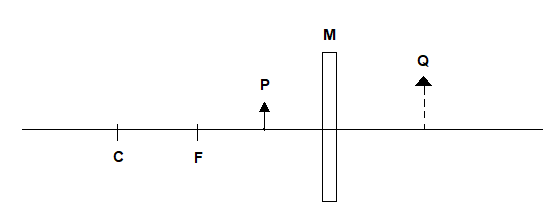
A ray of light is incident on a convex mirror as shown below. Redraw the diagram after completing the path of the light ray after reflection from the mirror.
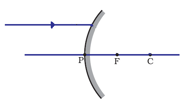
Copy of the figure in your answer book and show the direction of light after reflection.
